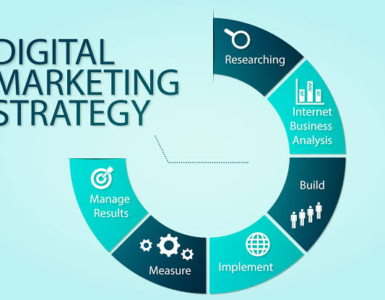On many different occasions, eCommerce has come to the rescue of many businesses. But to succeed, brands have to learn the audience’s behavior to post engaging content. Getting to know your brand audience may be difficult due to many factors like demography. But understanding their behavior and purchasing habits will save you time and resources as you offer products or services that the audience needs. And when you know the target audience behavior, what you’re posting will resonate with the audience leading to customers and the success of your brand. Here is how to study your audience to understand their behavior, foster your relationship, and invoke their purchasing habits through brand loyalty and advocacy. And also to better posting and conversions.
1. Study Your Current Marketing Base
The base or location of your market plays a major role in knowing your target audience’s behavior. The first place to start is by studying the audience group that forms your current market. The base helps in analyzing the kind of customers associated with your brand. Knowing your marketing base will make setting objectives easy and minimizes speculation by using actual leads and customers. It is better to study your audience’s behavior to avoid creating posts based on guesses or intuition.
There are many groups in your current market base and are classified into:
- Leads on your email list, text message, and follow your brand on social media.
- Leads have performed the major interaction on your brand page, ordering different products.
- Current customers
- And long-forgotten customers such as those that patronized your brand in the past.
Now, you can group your audience further into different criteria to better understand behavior, such as;
- Those who engage in your marketing actions, show significant interest in boosting your marketing, such as social media followers, email readers, and page visitors.
- Those in a particular demography include income, sex, employment status, age, or organization.
- Those with consistent purchasing power through ROI calculators, quote, surveys, polls, etc.
Since each criterion can be calculated, you can form a scorecard for your customers and leads. When each criterion is met, it’s an added point on your score scale. You should pay more attention to those who regularly participate on your page and those with the purchasing power than other groups. These groups have a higher chance of turning into purchasing customers or becoming repeat buyers. For instance, someone who has interacted with your brand and made a purchase once will likely purchase again if well-groomed and given the right product and offer.
After understanding your current marketing base, you can develop a better brand profile. You can form these groups on the profile. From these groups, you may discover the reason for certain behavior in a group and why a group has a higher score scale than others.
2. Review any current data and analytics.
To better understand your target audience’s behavior, start by reviewing the available data on the group. This data can be information collected in the past through surveys or other means on your customers. For example, a focus group conducted by interacting with real customers on their views concerning your brand’s product or service. You can start with this information but in a wilder manner to understand their behavior. Real customer interaction exposes you to customer feelings, challenges, and experiences and what party of your product requires modification.
3. Do keyword research
Keyword research is common but not used by many brands. This method is effective in getting attention, especially on search engines. Likewise, your customers’ search history. Keyword research helps you understand your customer’s search history to glimpse what the customer expects. You can get a glimpse of the product, brand, events, location, time, etc., they need. From this information, you can create posts related to their searches.
Fortunately, many tools have been invented to help brands make keyword research. Some of these tools are Socializing, Social Mention, and Topsy Analytic – some are free with basic features. You can visit any tool’s sites for a free trial before upgrading to a paid plan.
4. Conduct Surveys
Surveys are a good way to get a deeper relationship with your customers. The method helps create a better understanding of their behavior by attending to specific questions. The survey is created with questions about your brand’s products or services, ads, customer support, or promotion for your audience to answer.
Surveys can be general or specific. The general survey is designed for many good products, while the specific survey is more of asking the customer what they want or expect from your product. In a specific survey, you can also ask for the reason for their answers. Brands can anonymously do surveys and bribe the crowd with incentives as a way to drive an audience. Surveys provide provable data and results on your target audience’s behavior.
Surveys can also be done using survey software or apps. For example, Hubspot is a survey tool that offers customer feedback for a large audience. This software is designed to collect, analyze and organize the result into groups. These tools are great for organizing different surveys, be it surveys on loyalty, customer experience, or satisfaction.
5. Listen to the social media trend
If you know the right source, you can gather tons of information on social media. However, the platforms tend to shift in trends making it challenging to figure the real information from the fake. But if you’re good at research, you can find places and information related to your brand, but if not, you need to be patient and practice often. Quora is a good place to start searching for information or trends that will grab your audience’s attention.
In the tail end, understanding your target audience’s behavior depends on technology and patience. The practice starts from a little foundation before building to a larger market. The market has a lot of multiverses where you can attract a different target audience. As you post engaging content to gain an audience, remember to listen.






